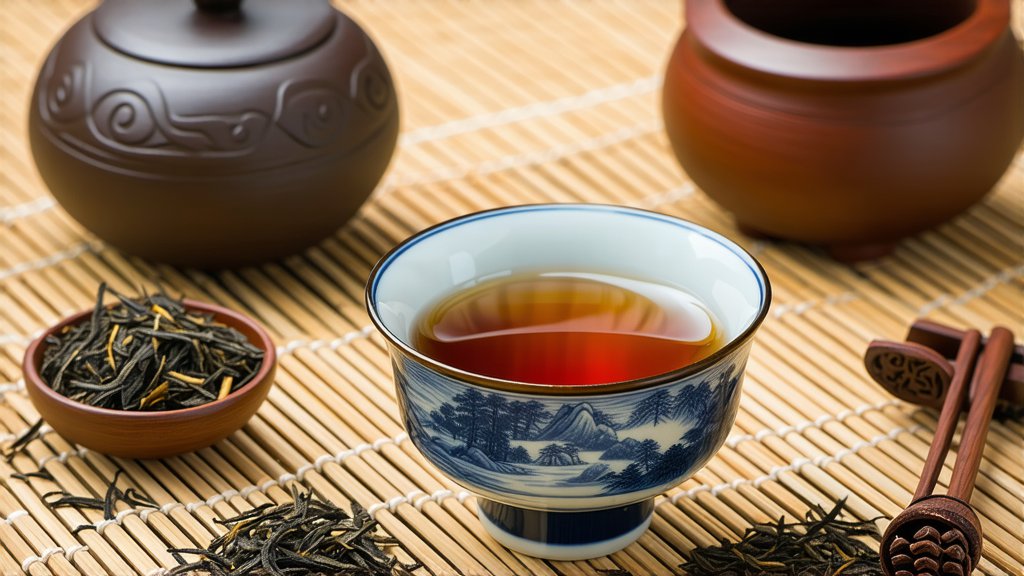
Pu-erh tea, a distinguished member of the dark tea family hailing from the Yunnan province in China, stands as a testament to centuries of tea culture evolution and refinement. Unlike its more commonly known green or black tea counterparts, Pu-erh undergoes a unique post-fermentation process that not only distinguishes it but also endows it with unparalleled depth and complexity in flavor profile. This article delves into the captivating history, diverse varieties, intricate production methods, and the art of appreciating Pu-erh tea, offering an insightful journey for international readers into one of China's most esteemed tea traditions.
History: A Legacy Brewed Over Millennia
The origins of Pu-erh tea trace back over 1,700 years to the Tang Dynasty, though it was during the Ming Dynasty that its production techniques began to take shape. The name "Pu-erh" is derived from the market town of Pu'er in Yunnan, where this tea was traditionally traded and aged. Historically, Pu-erh served as a crucial commodity along the ancient Tea Horse Road, a trading route that connected Yunnan with Tibet and other regions. Its durability and ability to improve with age made it a preferred choice for long-distance trade and barter.
Varieties: A Spectrum of Flavors
Pu-erh tea is broadly categorized into two main types based on processing methods: Raw Pu-erh (Sheng) and Ripe Pu-erh (Shou). Sheng Pu-erh undergoes natural aging, allowing microbial activity to gradually ferment the leaves over time, resulting in a tea that evolves in taste from its initial freshness to a mellow maturity. On the other hand, Shou Pu-erh undergoes a controlled fermentation process known as "wet piling," which accelerates the aging process, imparting a richer, earthier flavor profile often sought after by seasoned tea connoisseurs.
Crafting the Elixir: The Art of Pu-erh Production
The journey from leaf to cup for Pu-erh tea involves several meticulous steps. It all begins with the careful selection of sun-dried Camellia sinensis leaves, typically sourced from ancient tea trees or older cultivars. These leaves are then steamed to soften them before being rolled into tight spirals or cakes. For Sheng Pu-erh, these formations are left to age naturally, while Shou Pu-erh undergoes the wet piling process, where piles of tea are kept moist and warm to encourage microbial growth and fermentation. This can last anywhere from weeks to months, depending on the desired level of fermentation. Finally, the tea is dried and packaged for distribution.
The Art of Appreciation: Savoring Pu-erh Tea
To truly appreciate Pu-erh tea, one must engage in the ritualistic practice of Gongfu Cha, a traditional Chinese tea ceremony emphasizing precision and mindfulness. Begin by warming the teapot and cups with hot water. Add a generous spoonful of Pu-erh leaves, particularly for Sheng due to its compressed form, and pour boiling water over them. Short steeps of 5-10 seconds are recommended initially, gradually increasing as the leaves unfurl and release their flavors. Observe the transformation in color, aroma, and taste across multiple infusions—each revealing new dimensions of complexity.
For Shou Pu-erh, opt for slightly longer steeping times to fully unlock its deep, robust flavors. Pay attention to the evolving hues of the liquor, ranging from bright amber to dark burgundy, and the subtle shifts in aroma from earthy and musty notes to hints of spice and sweetness. As you sip, let the tea coat your palate, savoring its smooth texture and lingering finish.
Health Benefits: Nature's Remedy
Beyond its cultural significance and sensory pleasures, Pu-erh tea has been revered for its potential health benefits. Rich in antioxidants, it is believed to aid digestion, boost metabolism, and support cardiovascular health. Regular consumption may also contribute to weight management efforts and promote gut health due to its probiotic properties developed during fermentation.
In conclusion, Pu-erh tea encapsulates not just a beverage but a profound cultural heritage interwoven with centuries of history, craftsmanship, and tradition. Its unique production methods, coupled with an ever-evolving flavor profile, offer a captivating exploration for tea enthusiasts worldwide. Whether you're drawn to the raw vitality of Sheng or the mature depth of Shou, embarking on the journey of Pu-erh tea appreciation promises a rewarding experience that transcends time and borders.
Keywords: Pu-erh, Yunnan, fermentation, health benefits, Gongfu Cha